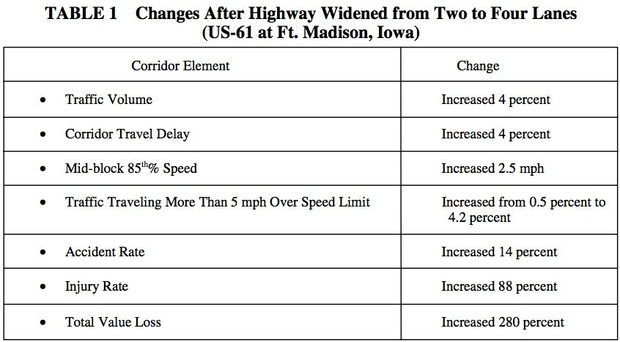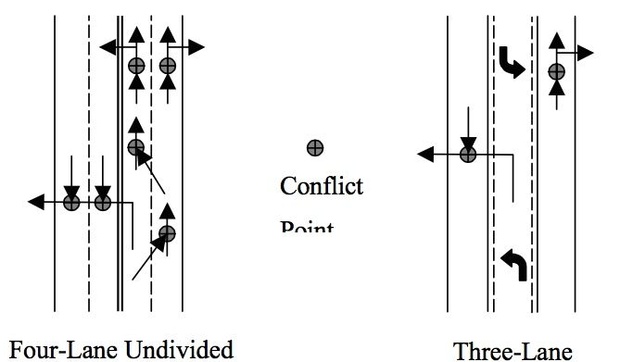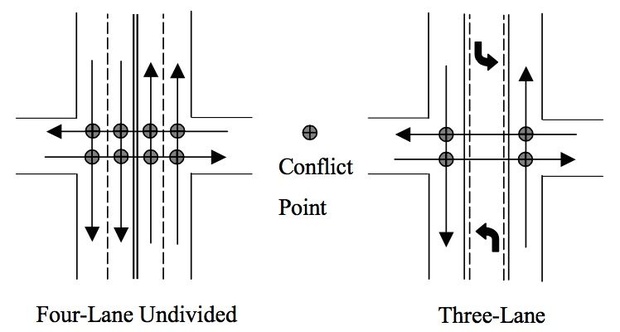|
|
pig slut lisa posted:that middling area kind of stinks, doesn't it? not urban enough to have all the amenities of a city, but not rural enough to really have the wide open spaces and tranquility. That was good but part of it made me mad: quote:in the places in between [suburbs], where the pattern of development simply does not support a high service level, there the services become more al-la-carte. We will keep your taxes low – we’re not going to ask you to subsidize anyone else – but we also can’t subsidize the lifestyle that you’ve chosen for yourself. We’re not going to rip up your street, but when it falls apart, we’re also not going to fix it. You’ll need to do that. We’ll come out there with the fire truck, but we’re going to charge you for that. Seems hosed up, especially since the article sort of championed mixed areas as "coming out from poverty" people living on the city edge and trying to get in-on-the-party zones |
|
|
|

|
| # ? May 25, 2024 03:06 |
|
|
gently caress. marry. t-rex posted:Tangentially related subject: using zoning to keep out corporation and franchise businesses which are largely anticompetitive with local business? illegal |
|
|
|
|
e: you posted as I didi am he posted:illegal This is literally what my town/community does though afaik. Maybe it's through some other mode of regulation? Like licensing or something? There are only 2 fast food restaurants for instance, both 'grandfathered in', 0 Starbucks etc fuck. marry. t-rex fucked around with this message at 23:50 on Nov 5, 2015 |
|
|
|
|
ya afaik there aren't any walmarts in Seattle bc they are corporate monsters bent on destroying the mom&pop lifestyle how do they get away with thad
|
|
|
|
|
beer pal posted:of course if youre not the diy type you can just go down to the home depot and pick up a scarecar Lol |
|
|
|
i'm going to say something about the big neighborhood development discussion but first two quick thingsgently caress. marry. t-rex posted:Now for what I wanted to ask... I think you [psl, iamhe] said you like Grid city layouts. Personally I fuckin hate straight roads, especially north/south and east/west. They are ugly, people end up driving on them and driving really fast. The sun shines directly down them into your face and its terrible and blinding. Yeah numbered streets are nice, but they don't have to be straight to be numbered they just have to be layed out in a simple pattern. Pinwheel, arcs, whatever? I guess some are less straightforward for expansion i like the grid, but it's not my favorite largely due to the problems you highlight. it's boring, people speed, etc. my favorite is a tokyo or london or bangkok style street network where there are lots of streets running different directions and--most importantly--there are lots of intersections. i think the best networks are formed when most streets are narrow, there are frequent intersections, block sizes are small, and the street pattern is organic. this is often referred to as an emergent network. that said, i'll take a grid over the typical suburban layout any day, with all the culs-de-sac and pointlessly winding roads and very little connectivity. gently caress. marry. t-rex posted:Tangentially related subject: using zoning to keep out corporation and franchise businesses which are largely anticompetitive with local business? it's constitutional to ban chain stores. can't speak to individual state constitutions/statutes though. |
|
|
|
so: neighborhood development. the level of discourse on this in the past 1.5 pages has been really high. i would like my job more if the public (and many planners too!) were operating at this level. so thanks. i love to talk about this stuff especially when people are being smart and informed. let's start here: dogcrash truther posted:Isn't the elephant in the room here though that the developer isn't doing this because they give a poo poo about the community they're putting an apartment building in, they're doing it for profit. You make it sound like the developer is altruistically creating housing for people. The developer is undertaking a major and possibly disruptive construction project in a community they don't care about for the single purpose of making a pile of money. this is largely true. development is driven by the profit motive 99% of the time, and there are some developers who literally don't care about anything but getting paid. but with many, there is definitely a sense of pride in the look and feel of the product. most of the developers in our community, especially the small scale ones, view themselves at least partially as placemakers. in other words, many times they feel they really are adding something of value to the neighborhood. so while some developers care simply about maximizing profits, many are willing to sacrifice at least some profit to make the project "better". of course, their opinion of better might be different from the neighbors', but that's a feeling that comes from a respectable place imo. GEExCEE posted:I'm not saying developers aren't shits just that the antidevelopment rhetoric that gets deployed in people's complaints is often a narrow and uneven critique a very well-made point. DCT mentions that people in his area pitch fits about single family housing developments. i recall that you're in a large metro area, and in these situations the anti-development rhetoric really ramps up against pretty much all types. in other areas only the multifamily buildings set off the alarm bells. but i think the notion that multifamily generates more opposition than single family is broadly true across a wide variety of communities. alnilam posted:I agree with dct though that developers are often horrible and manipulative and don't give a gently caress about the community they're building in, but people who vehemently oppose new dwellings are usually just whining that they don't want their neighborhood to ever change ever this is where a lot of my frustration comes from, especially with last night's meeting. consider the following. the neighborhood is currently a mix of single family dwellings (SFDs) and modest 6-12 unit apartment buildings. most of the apartment buildings are pretty crappy from a design standpoint. here's a good example:  i don't blame anyone but not liking this very much. it turns itself sideways to the street, there's not even a single window, etc. it's not a very personable design. here's the apartment building (10 2-bed units) that is coming to the neighborhood:  amazing award-winning architecture? of course not. significant;y better than the multifamily buildings currently in the neighborhood? i sure think so. it's hard to argue otherwise with a straight face. yet once we showed this to the neighbors, all their design concerns suddenly evaporated and they raised new concerns we hadn't heard to that point. it became very clear over the course of the meeting that a lot of the opposition was to any apartment building, even though they kept offering pretextual reasons as to why this particular building is bad but oh sure we can definitely imagine some we'd like. what alnilam suggests is the approach i like. it respects both sides and attempts to meet in the middle after a good faith dialogue. Lil Cunty posted:I think about this a lot. When rich people leave an area it's called white flight. when rich people move to an area it's called gentrification. this is very telling to me. communities need money to thrive but also just to survive. when money leaves an area it negatively effects the community in many socioeconomic ways. I personally think the solution is community integration. single family housing should be heavily discouraged and regulated in favor of mixed-income apartment housing. heavily populated cities should make a law that any new residential structures are multi family and multi income, and hold developers to that law. it isn't useful, to me, to demonize developers (or anyone else) for trying to make money in a capitalist society unless you plan on starting the revolution. it is more productive, imo, to find ways of allowing them to make money while also requiring them to be good citizens. that is what laws are for i think this is really good, especially the parts i've bolded. one distressing trend in "gentrifying" neighborhoods is that residents sometimes actively resist improvements to the neighborhood because they're worried about attracting new richer people. when we have people saying "don't give me better transit! don't clean the park! don't fix my streets! leave my neighborhood lovely!" we have reached a really negative place. absent the imposition of a soviet-style residency permit system ("papers please, comrade"), we should assume that people will move to the best neighborhood that is within their budget. what happens when a neighborhood starts getting better/more desirable? this can play out a couple different ways. in WDs suggestion, i see a lot of winners. middle-income people are winners because we're allowing a lot of housing to be built, enough that they can live where they want at a reasonable price point. lower-income people are winners because the middle-income people are buying the new additional housing units rather than outbidding the poor for a static number of housing units. developers are winners because they get to build and make money (although their profits aren't as high as they would be in a zoning-constrained world). governments are winners because the land is being used in a more productive manner, i.e. while both the tax base and the infrastructure need are higher, the tax base increases at a greater rate than the infrastructure costs. now consider another path. the over-zoned neighborhood. the neighborhood that only allows single family houses. the neighborhood that is so so common today. who wins in this situation? the middle-income people still come out ok, although they're paying more for housing than in the first scenario. the poor do terribly, because they get outbid by the middle-income folks as they all compete for the same limited housing supply. the developers probably lose out; individual projects earn a higher profit margin, but overall revenues are lower compared to a densifying and growing neighborhood. the city is a loser because the tax base doesn't grow as fast. now it's true that there will always be a segment of the population that will not ever be served by the for-profit housing market. there's a bottom 20-30-40% of the population that can't afford even the barest bones market rate housing, and in these situations i absolutely support housing assistance (whether that's gov't provided housing, housing vouchers, grants to non-profit developers, that's a more lengthy discussion). but there are so so many "winners" we can produce with market-oriented solutions if we would loosen up zoning just a hair in these neighborhoods that we've put in zoning straightjackets even as their popularity explodes. dogcrash truther posted:heres what i've seen happen: this is an excellent point too! here's why this happens. many types of development do not pay for themselves. in other words, they do not generate enough taxes to cover the cost of providing public services (roads, schools, sewer, etc.). in general, SFDs do not pay their own way unless they are very pricey. in general, multifamily does pay its own way, especially the more "urban style" stuff (i.e. something that takes up a decent portion of its lot and is not covered in massive parking lots and empty green space). in fact, "urban style" development consistently outcompetes suburban sprawly stuff when it comes to financial productivity. the SFD in the old part of town on the small lot pays more of its own way than the new tract house sitting on a half acre. the three-flat that meets the street pays more of its own way than the giant complex with eight scattered vinyl buildings and 200 parking spaces. the slightly shabby two story main street style building pays more of its own way than the shiny new walmart on the edge of town. so why do we see what DCT has identified time and time again? a couple reasons: 1) many cities have dug themselves into a huge hole with a primarily SFD tax base, so even when a financially productive use comes along they have to chuck the money at the  EMERGENCIES EMERGENCIES rather than the stuff that's like "ehhhh this is pretty bad but we can string it along another 5 years" rather than the stuff that's like "ehhhh this is pretty bad but we can string it along another 5 years"2) cities (and voters) are very happy to direct money towards a shiny new improvement even at the expense of needed updates and maintenance 3) most cities don't even think about whether a use is going to be financially productive. so it's easy for a scofflaw developer to lie about financial impact in many cases. how are we going to check!? we're too busy trying to duct tape this budget together! the fact that 99% of the planning profession doesn't even have the financial producitivty of land on their radars is a profound professional disappointment to me alnilam posted:where i live there is also plenty of parking but people feel so entitled to "their spot" (the public street parking spot right in front of their house) that they put a chair there to save it for them, even in fair weather, so believe mbe when i say they're complaining about parking when there is no actual shortage this is another problem that we, as city governments, have foisted upon ourselves. we have done so much to ensure that drivers rarely pay to park--abundant street parking, minimum parking requirements for private property, subsidized public parking garages--that we have created this sense of entitlement. of course people get upset when you take away "their" "free" stuff! it's our own drat fault for hiding the costs of parking so well from the people actually using the parking. nobody complains too much about the fact that our society expects most individuals to pay money to buy housing for themselves, yet people flip their poo poo when we ask them to maybe just maybe pay some money for housing for private vehicles. dogcrash truther posted:i spray paint a handicapped symbol onto the place i parked, not for me, because i'm not handicapped, but so only handicapped people can use that spot from now on. they call me johnny handicapableseed beer pal posted:of course if youre not the diy type you can just go down to the home depot and pick up a scarecar lol |
|
|
|
oh also re: whose opinion matters more, the people who have lived in the neighborhood for 25 years or the person who wants to come in and do something different, i think their opinions are equally valid. i don't begrudge the owner of an SFD her dislike of an aprtment building coming to the block. i get it! it doesn't fit in as well aesthetically, now there's a bit more traffic, etc. perfectly valid to get upset. where i hop off the train is when those SFD owners leverage their power, privilege, and wealth to get the government to freeze their neighborhood in amber. |
|
|
|
gently caress. marry. t-rex posted:Yeah the poor should seize the capital and means of production from the rich, then reinvest it into society :P what about metro areas that have been fractured by breakoff suburbanization (and their higher median income citizens who leach off the infrastructure/prestige of the city center by commuting from a less-taxed locale) pushing to reincorporate suburbs? |
|
|
|
Another factor that should be remembered with gentrification: sometimes, it comes from the top down - that is, from the city itself, working with developers or pushing for some fancy private-partner event that's subsidized with tax dollars. For instance, world cup events and olympics events are often used as excuses to 'reinvigorate' lower-income parts of a city by basically building over a lot of it. Many of the favelas in Rio de Janeiro have been cleared out and demolished for the sake of the World Cup and Olympics, and a good part of East London was "regenerated" for the sake of a bunch of venues, spaces and temporary buildings that will not be used again or torn down. Similarly, "stadium welfare" is where sports teams ask for a new sports venues at the cost of the municipality, or the sports team will leave and relocate to a more friendly municipality. Both represent a poor long-term infrastructure investment on the part of citizens - though such actions are not done with the local inhabitants' well-being in mind imo; it's to present the product of a better image to suburbanites and foreign tourists. I remember reading a lot of depressing articles on london and rio back in the day. Maybe i'll link one or two if I remember them? that specific type of gentrification is one that should almost universally be opposed if it's floated nearby. Rodatose fucked around with this message at 07:27 on Nov 6, 2015 |
|
|
|
|
I just found this thread yesterday and read through all 15 pages -- it's that good. I'm a white bourgeois gentrifier, but I'm trying to change that. What's the best way to make these changes in the city I live in? Go yell at olds in city council meetings? I've been considering donating to these charities as a start: http://www.transformca.org/ http://californiawalks.org/ http://circulatesd.nationbuilder.com/ http://saferoutespartnership.org/ https://calbike.org/ http://www.peopleforbikes.org/ http://www.strongtowns.us/ http://www.bikeleague.org/ |
|
|
|
|
Rodatose posted:what about metro areas that have been fractured by breakoff suburbanization (and their higher median income citizens who leach off the infrastructure/prestige of the city center by commuting from a less-taxed locale) pushing to reincorporate suburbs? ugh it really annoys me when people live just inches beyond city limits purely bnecause  taxes taxes and then commute into the city every day, using the roads, police, parks, sewage, etc that they're not paying for and then commute into the city every day, using the roads, police, parks, sewage, etc that they're not paying forlike if youwant to live outside the city because you prefer that way of life or something something school district, that's fine, and i know everyone has the right (and should) to use these public resources of any place they go to without necessarily living there. but i can't tell you how many times i've heard someone (who could def afford it) say "i would live in the city but property taxes are higher there so i don't, i live just outside the city" i guess the reason it particularly annoys me so much is becuse of how often as a bike commuter i have to field the "get off MY roads, I pay gas tax and you don't so you're on my road get off it" bullshit, from somebody who has driven their SUV in from the suburbs so look buddy, besides the fact that the roads are a public utility, let's humor you and talk about how these roads get paid for the gas tax pays for highways and bridges only, at least here in PA, and even then it's not enough so income tax + property tax covers the rest in contrast, the city roads that I ride on are maintained by the city's DPW funded entirely by city property tax and city income tax; they don't see a dime from the gas tax you live outside the city because abloo bloo taxes, i live inside the city and pay these taxes so actually you're on MY roads, bithc, you're welcome for sharing |
|
|
|
|
oh but to respond to your actual question about annexing suburbs, i think it's an interesting idea and i'd love to hear a more experienced person comment on it, but i'm sort of ambivalent... it's wrong that people live just outside the city just to avoid taxes but then go leech off of city resources, BUT i could also understand that they might have been living there for a while, they bought the house with the understanding that they lived in X township, not Y city, and suddenly the city is annexing their township which is going to majorly disrupt their property value and what taxes they pay... meanwhile they've already set up their life around the way things have been, and housing isn't exactly a fluid market because moving is a pain in the rear end and sometimes hardly even possible for some people, so maybe now you're stuck there and can barely afford it like, many people definitely live in ways that they wouldn't be able to afford if we didn't externalize the cost, and that's a problem... but with so many people doing so, suddenly internalizing the cost would be chaos and bankrupt a lot of people in other words, the way things are is wrong, but fixing it would be really painful for a lot of people who are used to the wrong way that things are, and i don't know what the best solution is... just gently caress the people who live there and fix it anyway? maybe it's... it's the same way i feel about school district funding, which i think is another fascinating (and depressing) topic. in the mid-20th century we had the chance to make school districts be evenly funded nationally, but we blew it and school districts are funded according to local property tax, meaning wealthy people get nice schools and poor people get lovely schools. by now, housing markets reflect this fact, and school district is one of the biggest factors in deciding where someone lives and hence has a huge effect on property value, which in turn has an effect on local tax revenue, creating a horrible feedback loop (good school makes the place more desirable, values go up, more money for school, school gets better, place gets more desirable, values go up, etc.) that just makes school disparity, economic disparity, and housing disparity worse and worse i very much wish it were different, because even if you hold the all-american belief (which I don't hold) that the poor deserve their lot cause they're just not working hard enough, how can you say that their children in turn deserve lovely education just for being born there? but in a way it feels like we're stuck now... millions of people have decided where to live and set up their entire lives - for generations now! - based on sending their kid to a good school. If you fix things to even out school funding across the board, it would be insane for the housing market and disrupt a lot of people's lives. Suddenly middle-class and welathy neighborhood prop values would plummet because their school is no longer going to be the best around, and meanwhile poor neighborhood property values might go up a lot too since their school is now improving. To me this is, well, not such a bad thing  and the goal of "good schools everywhere" is absolutely necessary in my mind and the goal of "good schools everywhere" is absolutely necessary in my mindbut on the other hand i sympathize with middle-class people who scraped together their finances to buy a home in a good school district, the home represents 75% of their net worth, and suddenly the home is worth half as much and prop values going up in poor places might not be the best thing either, because a lot of people there rent (so they're not seeing an increase in assets because of it), and now maybe their rent goes up and they have a harder time living there idk there are a lot of instituional problems that are hard to change and i don't know the best way to change them, maybe the answer is "it's just going to be painful for some people but it has to change" which i would accept personally because the way things are now is horrible, but maybe there's a more graceful way to do it plus you're never going to get enough public support for such a painful, disruptive change |
|
|
|
holy poo poo i just learned that parking meters have been illegal in North Dakota since 1948 when some guy threw a big tantrum about his unpaid parking tickets and the voters approved a referendum making parking meters illegal |
|
|
|
out of all the millions of fits that have been thrown in the name of whining about parking, that's maybe the most impressive one ever. |
|
|
|
|
Wouldn't annexing a suburb be even more expensive then parasitic commute drain, due to having to maintain huge areas of likely super ineffecient roadways and stuff |
|
|
|
gently caress. marry. t-rex posted:Wouldn't annexing a suburb be even more expensive then parasitic commute drain, due to having to maintain huge areas of likely super ineffecient roadways and stuff Well it depends on the unit of government doing the annexing. I agree 100% with you if we're talking about a city annexing a suburb. It's gonna be a net loss every time due to the infrastructure costs. But I'd love to see central city school districts expand to grab the suburbs. In those cases the annexation would generally serve as a net positive for a lot of the things alnilam was talking about. Of course this presupposes a city government that's a different body of gov't from the school district, which is usually but not always the case. |
|
|
|
aha, it hasn't been archived :phew: |
|
|
|
|
ya i couldnt think of anything to say though. im kind of burnt out on school lol. |
|
|
|
|
I've got something pretty funny to say, check this out: "unban planning " haha |
|
|
|
alnilam posted:I've got something pretty funny to say, check this out: goldmine this thread |
|
|
|
I, think that planning should have been probated at most. |
|
|
|
|
here's a cool thing i had never heard of. operation breakthrough was a HUD initiative where they built a bunch of experimental housing out of completely modular units. this is the detailed breakdown of each completed site and this is the report made to congress about it psl have you heard of this? a friend stumbled on it a little while ago and showed it to me today. i had no idea hud was doing this kind of thing at that time. i've found a few more articles on specific sites if anyone wants the hook up. |
|
|
|
i am he posted:here's a cool thing i had never heard of. i had not heard of it. i'm going to check it out but my first impression is WOW that 70s design on the document cover p.s. happy 2nd semester pig slut lisa fucked around with this message at 04:45 on Jan 10, 2016 |
|
|
|
|
psl, along time ago you said in this thread you feel sorry for California urban planners. why? |
|
|
|
Mapparu posted:psl, along time ago you said in this thread you feel sorry for California urban planners. why? Good question! First, I'll list some of the ills that California planners are trying to remedy: -Rising real estate prices across major cities, posing challenges to low-income residents and businesses -Not enough tax revenue to cover full range of desired projects and services -Environmental concerns such as sprawl and water depletion These issues exist in every state to varying degrees, but California may be where they are most pressing. Unfortunately, the unique legal tradition of California has produced substantial impediments to anyone trying to address these issues in a meaningful way. [Caveat: I'm probably going to get some details wrong here since I've never practiced in California, but I think the overall thrust of my narrative is sound] In 1970 California adopted the California Environmental Quality Act (CEQA). Originally hailed as a robust tool for defending California's environment, CEQA has been perverted into a tool that leads to negative outcomes by reducing the amount of infill development built, hampering transit projects, and increasing both private and public costs by running every project through a morass of highly technical procedures. Long story short, CEQA allows nearly anybody to challenge nearly any project to meet a host of stringent "environmental" standards (18 to be exact). Here is a fun chart demonstrating the CEQA process:  Doesn't that look fun! CEQA would be bad enough to administer as a planner thanks to the sheer drudgery--CEQA review can take over a year even without the courts getting involved--even if it produced good outcomes, but unfortunately it does not. A recent study of CEQA by Holland & Knight produced the following findings: quote:• CEQA litigation is not a battle between “business” and “enviros”—49 percent of all CEQA lawsuits target taxpayer-funded projects with no business or other private sector sponsors. In short, CEQA makes planners do a ton a work that in many cases delays, diminishes, or prevents the very outcomes they're trying to achieve through progressive planning! CEQA isn't the only lovely law California passed in the 70s. In 1978, a voter initiative known as Prop 13 passed by a two-thirds majority. Prop 13 implemented a strict cap on property tax rates. Additionally, and perhaps more importantly, it capped the assessment value for most properties in the state: [quote] The proposition decreased property taxes by assessing property values at their 1975 value and restricted annual increases of assessed value of real property to an inflation factor, not to exceed 2% per year. It also prohibited reassessment of a new base year value except for in cases of (a) change in ownership, or (b) completion of new construction. [/url] Even when property values are quadrupling (think San Francisco), the local government can only tax the property at a low rate and has to use an artificially low value unless the property has sold recently. This produces incredible windfalls for homeowners when they do decide to eventually sell (note that this doesn't benefit renters much, hahaha!). In the meantime, their home municipalities struggle to cover the increasing cost of services on a constrained tax base. Prop 13 is one of California's many forays into direct democracy, a system that sounds great on paper and has played out horribly in the planning world. The initiative and referendum system allows Californians to engage in all sorts of NIMBY actions. Check out this and this. Whether the motivation is liberal (halting gentrification) or conservative (preventing development that isn't high end), the results are nearly always the same: NIMBYs shut down dense infill development, pushing more sprawl to the fringes and putting more Californians in their cars. And these are just the issues facing the communities that are trending upward! There are plenty of stories of California communities that are struggling to hang on: -http://granolashotgun.com/2015/03/17/urban-triage/ -http://granolashotgun.com/2015/09/03/build-it-and-they-might-not-come/ -http://granolashotgun.com/2015/03/08/why-do-we-do-this/ -http://granolashotgun.com/2015/03/14/downward-mobility/ Planning has its challenges everywhere. Every community is anti-renter to some extent. Every community is anti-density. Every community is anti-transit. Every community is anti-bike. Every community ignores the long-term costs of maintaining infrastructure. These are the parameters of the profession. California amplifies them by saddling itself with policies and procedures that are wielded by the privileged, the powerful, the white, the wealthy to devastating effect on the supposed goals of sustainability, affordability, and inclusivity. No thanks, I'm not interested. |
|
|
|
|
wow that's a lot of hoops to jump through. have there been laws/acts like the CEQA in other states? do they still exist? |
|
|
|
afaik there's a handful of states that adopted legislation modeled on CEQA but none of them (a) are close to as rigorous or (b) apply to private sector projects. California is really sui generis in this regard |
|
|
|
|
i dunno if it's the same thing but i remember learning that there's a kinda similar "environmental review" process in NYC, and similar to california, it often gets abused by people who want to block a project, and rarely used by actual environmentalists So this urban planner lady in nyc wanted to do a bunch of inexpensive bike and ped friendly projects, and the anti-bike / anti-ped / anti-change people kept calling for an environmental review which would have made the very inexpensive project be prohibitively expensive. However, there's a "temporary pilot project" provision where you can do your project anyway if it's a <1 year experiment. Sso this lady did a bunch of projects anyway and labelled them as temporary experiments. Of course a few months into the "experiment," everyone loves the new improved street design and the change-haters see that the world hasn't ended as a result, and people give up their calls for environmental review and the planner gets to keep her project.
|
|
|
|
|
i found urban planning on the tv and it is the simcity advisors but real and its good |
|
|
|
im going to post about road diets itt later tonight e: vvvvv lol this took me too long to get but i get it now pig slut lisa fucked around with this message at 23:51 on May 18, 2016 |
|
|
|
|
did planning re-reg yet |
|
|
|
OK let's do this Is there any particular reason you're posting about road diets today? A friend in the super secret planning off-site asked about a proposed road diet on a major road they use and I thought maybe all my postin' pals would be interested in discussing this concept. What is a road diet, anyway? Citylab's Eric Jaffe explains: quote:The concept of road diets emerged as a response to a common practice of expanding two-lane urban arterials into four lanes once vehicular traffic hit a certain point—roughly 6,000 cars a day by some estimates. The original thinking held that wider roads meant better traffic flows, especially at rush-hour, but new lanes also attracted new traffic, and outside the peak periods you'd end up with lots of wasted road space. An analysis of road widening in the small city of Fort Madison, Iowa, showed an increase in traffic volumes, but also delay, speed, and crash and injury rates: In short, a road diet is any reconfiguration of a road where the amount of space dedicated to automobiles is reduced. Road diets may include some or all of the following:
Why do cities install road diets? A city might install a road diet for all sorts of reasons. Eric Jaffe again: quote:In small urban areas (say, populations around 17,000, with traffic volumes up to 12,000 cars a day), post-road diet crashes dropped about 47 percent. In larger metros (with populations around 269,000 and up to 24,000 daily cars), the crash reduction was roughly 19 percent. The combined estimate from all the best studies predicted that accidents would decline 29 percent, on average, after a four-to-three-lane road diet—DOT's reported figure. Wait, that article said that traffic volumes typically remain the same after a road diet. How can that be? The answer stems from the fact that the collective transportation decisions of an entire population comprise an incredibly complex and dynamic system. Imagine you want to go from Point A to Point B. What is your trip going to look like? Imagine all the variables that go into this seemingly simple decision:
Whenever you travel, you (often effortlessly) weigh all these factors to come up with your trip preference. You also weigh your preference against the value of the trip. You're likely willing to stomach higher costs and less convenience for an important trip like "going to work" than you are for a less important trip like "we're out of tahini sauce, so I can't make this one recipe, but I've got lots of other options for dinner tonight". In short, every trip is an individual cost-benefit analysis. Now imagine the thousands and thousands of such analyses that occur even in small cities (the typical American averages slightly more than 4 "trips" per day). My decisionmaking process slightly influences lots of other people, who in turn influence me. If I'm occupying a seat on the train, that makes it seem a little more crowded to you. If you and everyone else are clogging up the road at 8:30 AM, that makes it a little more appealing for me to be on the road at 8:15 AM, even if that means I'm showing up at the office before I need to. This brings us to another important point: Everybody taking a trip is maximizing their cost-benefit ratio on an individual basis. Every person has total choice in choosing their mode, route, and time for each trip (subject to their own means, of course). There is no central planning agency that directs each of us how to go where. We all get to pick what seems best for us. This can often produce a Nash Equilibrium: quote:In game theory, the Nash equilibrium is a solution concept of a non-cooperative game involving two or more players, in which each player is assumed to know the equilibrium strategies of the other players, and no player has anything to gain by changing only his or her own strategy. If each player has chosen a strategy and no player can benefit by changing strategies while the other players keep theirs unchanged, then the current set of strategy choices and the corresponding payoffs constitutes a Nash equilibrium. The reality of the Nash equilibrium of a game can be tested using experimental economics methods. You can imagine how this works on crowded highways. Even though society as a whole would save time and stress if some of those drivers carpooled, or drove at an off-peak time, or were forced to take a 2 hour bus ride, none of them are individually making that choice. Everyone is doing what they perceive to be best for themselves, impacts on everyone else be damned! (Incidentally, I think self-motivated trip planning is good. The trick is designing a system to encourage people to make socially optimal choices.) All that makes sense, but what does it have to do with road diets? When we see a congested road, it's natural to assume that what we're seeing represents some sort of baseline "true level" of traffic. But that's not actually true at all! Remember, the collective trip decisions of a population are a complex and dynamic system. The system is complex because we can't know why everyone is doing what they're doing, and it's dynamic because changing any input of the system will change the outputs of the system. For instance, if we widen a congested road, chances are that we will actually induce more cars to travel on that road: quote:I grew up in Los Angeles, the city by the freeway by the sea. And if there’s one thing I’ve known ever since I could sit up in my car seat, it’s that you should expect to run into traffic at any point of the day. Yes, commute hours are the worst, but I’ve run into dead-stop bumper-to-bumper cars on the 405 at 2 a.m. If you use your robot economist brain to think about this, you'll realize that expanding the road increases the supply of road, and that means that the cost/price (think in terms of time spent stuck...that's a cost!) drops relative to the initial demand for that road, and so demand for driving increases as more people tweak their personal cost-benefit analysis and realize that driving this road at this time of day makes more sense all of a sudden. Now: recalibrate your robot economist brain to consider what happens when we install a road diet. Shrinking the road decreases the supply of road, and that means that the cost/price increases relative to the initial demand for that road, and so demand for driving decreases as more people tweak their personal cost-benefit analysis and realize that driving this road at this time of day makes less sense all of a sudden. Maybe some people decide to bike or bus or carpool. Maybe some decide to travel earlier or later. Maybe some decide to take a different route. And maybe some decide not to make that particular trip at all. OK, I get how a road diet impacts travel decisions. But isn't it a bad thing to raise the costs of driving down that road? Ehhh...maybe? If you look at it from a very narrow perspective? But the answer is: probably not. First, consider the immense costs of building a society around cars. Cars themselves are expensive. Gas is expensive. Roads are expensive as hell--especially after a couple decades once you have to start resurfacing them--and most cities have hung gigantic financial anchors around their necks by overbuilding roads. Thousands of people are killed each year by cars. They pollute. Etc etc etc. Raising the costs of driving internalize some of these costs, and generally people agree that reducing externalities is a good thing. Second, remember that trip decisions aren't just a cost analysis. They're a cost-benefit analysis. In other words, not every trip holds the same value. Raising the costs of driving pushes out the least valuable trips first (again, this is subject to everyone's means, but you get the general idea). So a typical road diet will likely encourage drivers who are running little errands to change their behavior before it impacts important errands and commuting. Very interesting! What are some other things I should read or Google while you go for a run since you've been typing for too long? "Triple Convergence" "Braess' Paradox" http://www.uctc.net/access/25/Access%2025%20-%2004%20-%20Traffic%20Congestion%20is%20Here%20to%20Stay.pdf http://www.strongtowns.org/journal/2015/11/20/reducing-or-inducing-traffic http://www.strongtowns.org/journal/2015/8/26/video-four-road-diets <------ video here |
|
|
|
Chiming in as a licensed landscape architect who frequently works in the urban realm, principally on built projects but occasionally on large-scale master plans. I'm based in California and practice internationally; I can confirm our well-intentioned state laws and direct democracy end up undermining the very kind of large-scale planning and infrastructural work that the state is trying to achieve. We've implemented one large-scale downtown street grid renovation that included a significant road diet, along with one-way to two-way conversions, extensive street tree planting and the addition of significant pedestrian amenities. It was kind of amazing to see how many of the locals resisted the project in the early phases and then got right in line behind it once the first few blocks opened up. One of the focuses of my practice has become urban parks with active event programming. Because of the economic realities of park and recreation departments, many cities are currently evaluating public/private partnerships (P3s) where the City works with - or entirely turns over - to a non-profit foundation that manages the park. For this to be successful, the parks havce to generate their own revenue through a variety of means. While some places happily embrace this, it's been highly contentious in other communities. Striking a balance and finding the right fit for each community. This thread is cool and good, let's see where we can take it! |
|
|
|
|
Thank you for post ing |
|
|
|
Road diets are uncool and bad and exist solely to make people who have to drive for their commute to work, to pick up kids, or go anywhere sit more in traffic, while smug do-gooders cycle from their yurt to Whole Foods and back. They want to do this in an adjoining city on a road that is already hopelessly congested next to a grade school. The people advocating that clearly have no kids in that grade school. In other words, road diets are not chill or good.
|
|
|
|
|
Bacon Taco posted:Road diets are uncool and bad and exist solely to make people who have to drive for their commute to work, to pick up kids, or go anywhere sit more in traffic, while smug do-gooders cycle from their yurt to Whole Foods and back. They want to do this in an adjoining city on a road that is already hopelessly congested next to a grade school. The people advocating that clearly have no kids in that grade school. I'm gonna go out on a limb here and say you probably don't have much evidence about the relationship between road diets and traffic |
|
|
Bacon Taco posted:Road diets are uncool and bad and exist solely to make people who have to drive for their commute to work, to pick up kids, or go anywhere sit more in traffic, while smug do-gooders cycle from their yurt to Whole Foods and back. They want to do this in an adjoining city on a road that is already hopelessly congested next to a grade school. The people advocating that clearly have no kids in that grade school. The entire world does not exist for your sole benefit, dude. ---------------- |
|
|
|
|
|
I'm always getting stuck for a few seconds at a time behind buses picking people up!! Why don't they just use transit funding to buy everyone a car??? Problem solved, ez
alnilam fucked around with this message at 20:33 on May 27, 2016 |
|
|
|

|
| # ? May 25, 2024 03:06 |
|
misty mountaintop posted:The entire world does not exist for your sole benefit, dude. The entire world also does not exist for the sole benefit of that tiny minority who benefit from road diets, either.
|
|
|
























